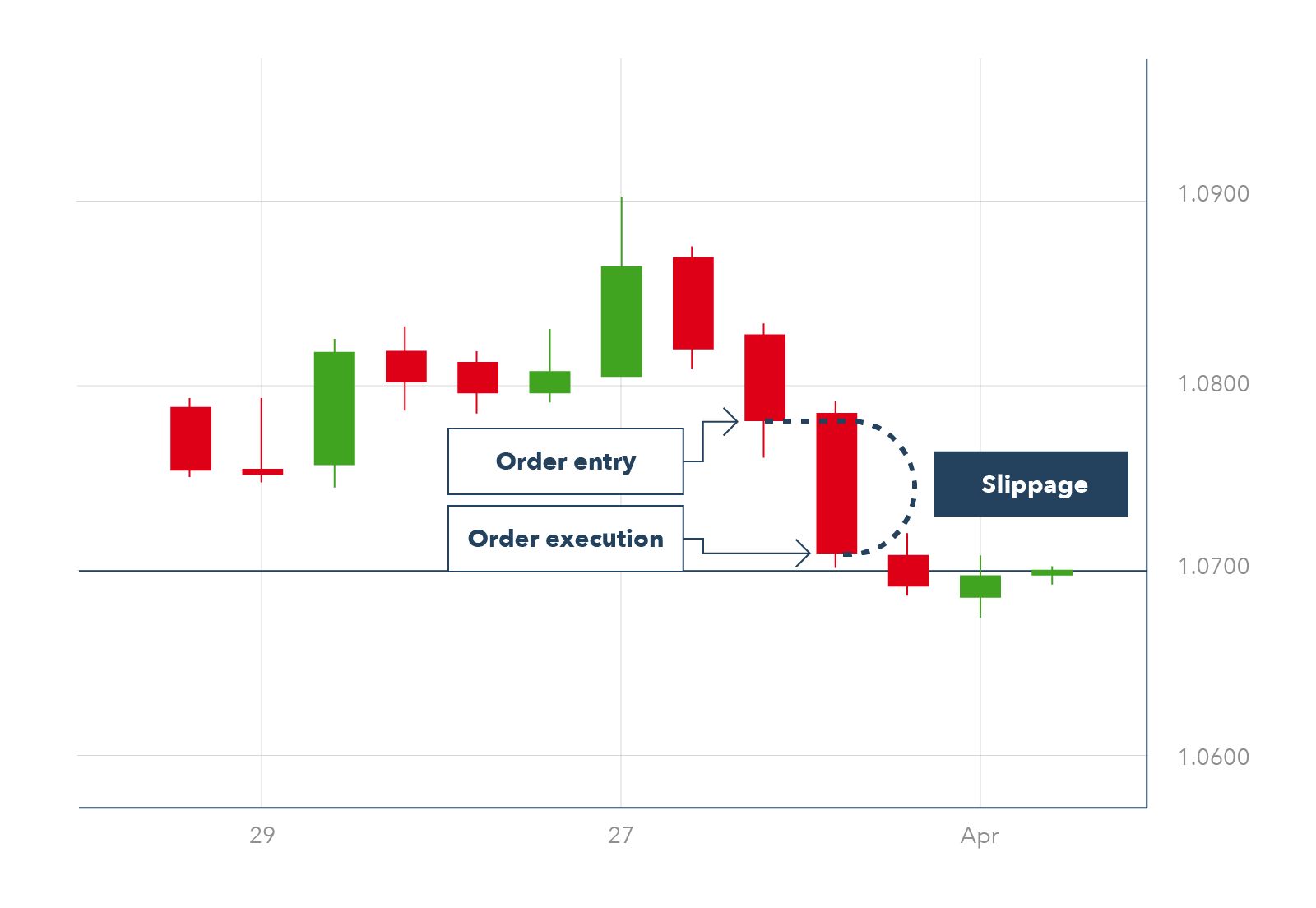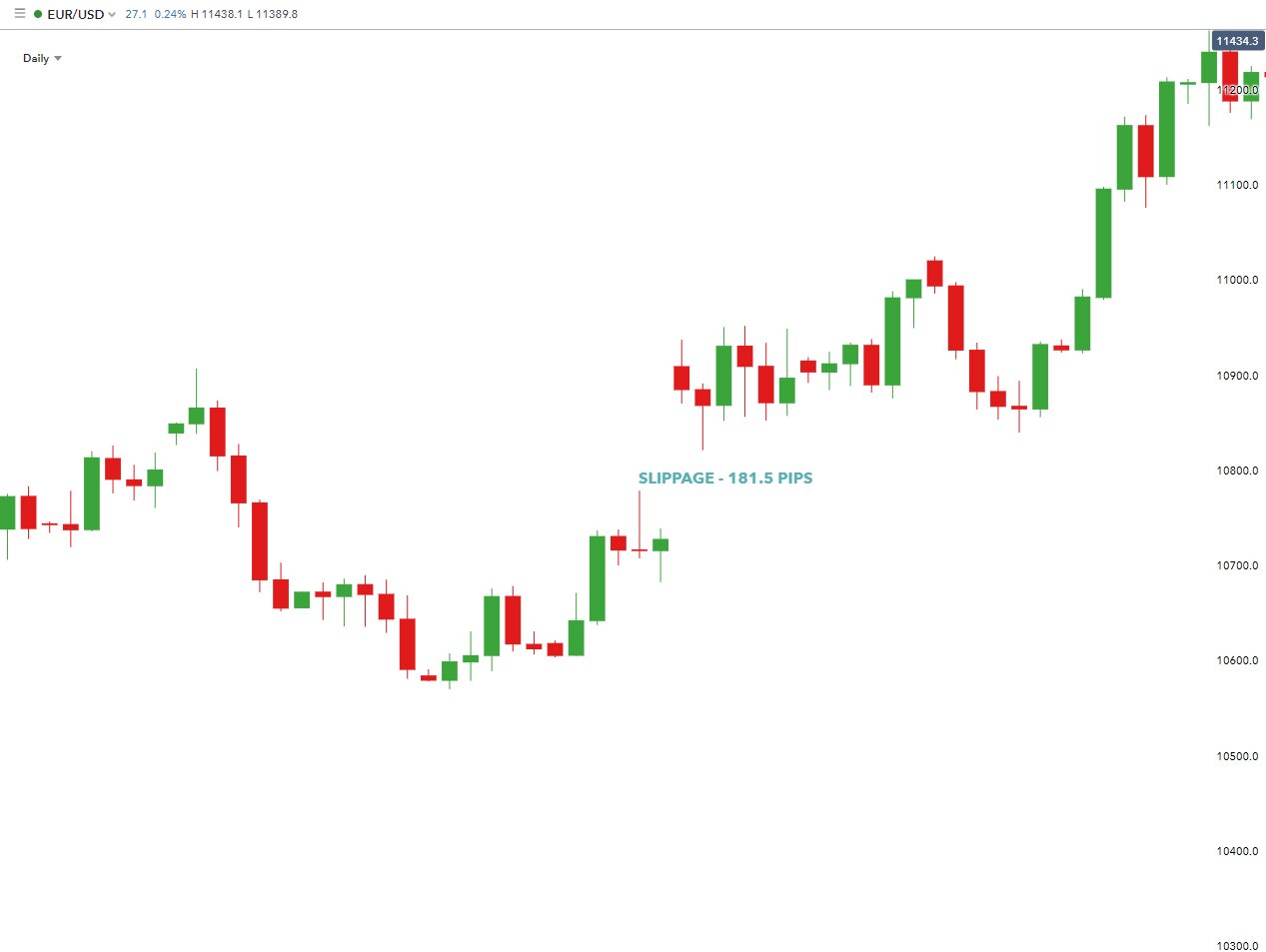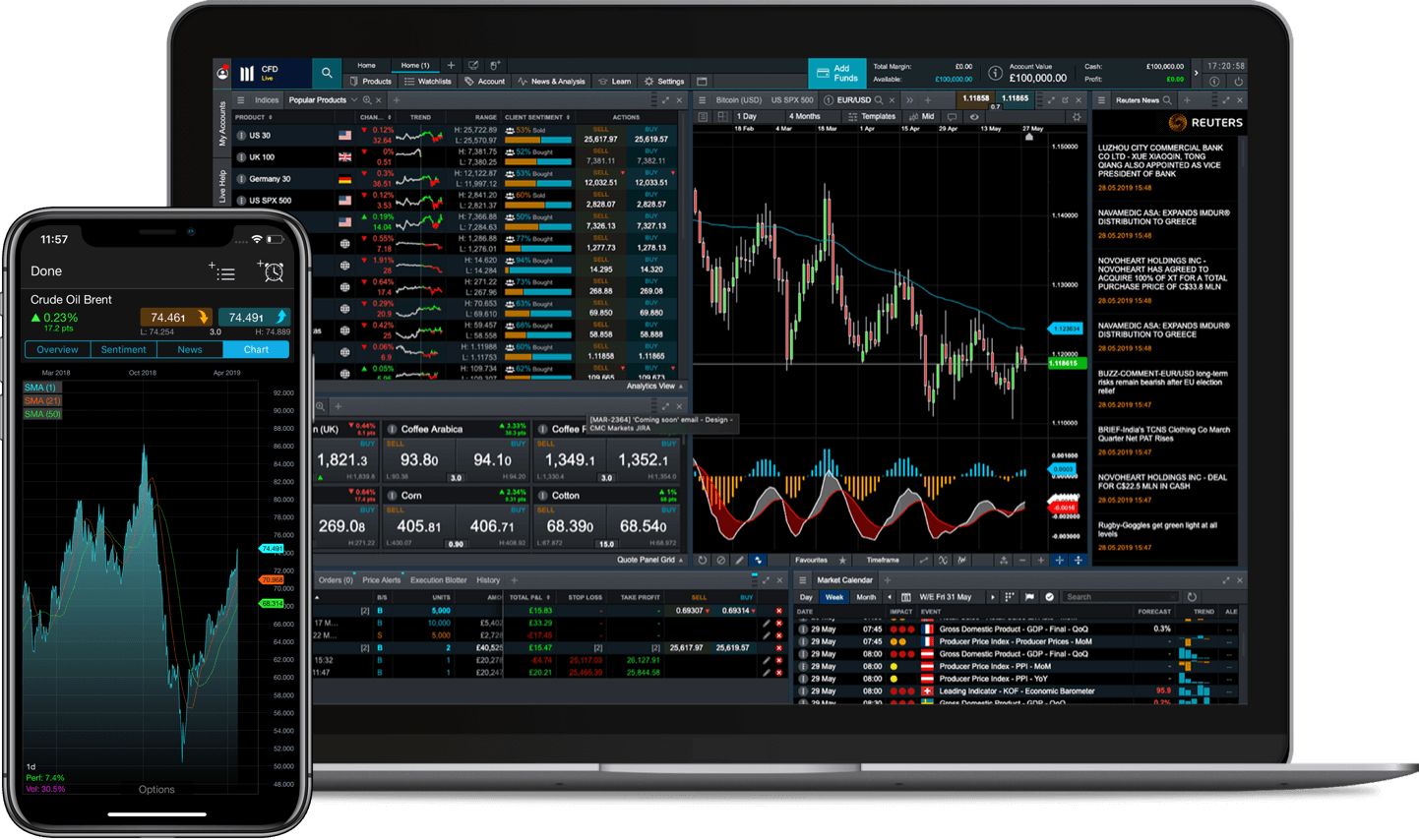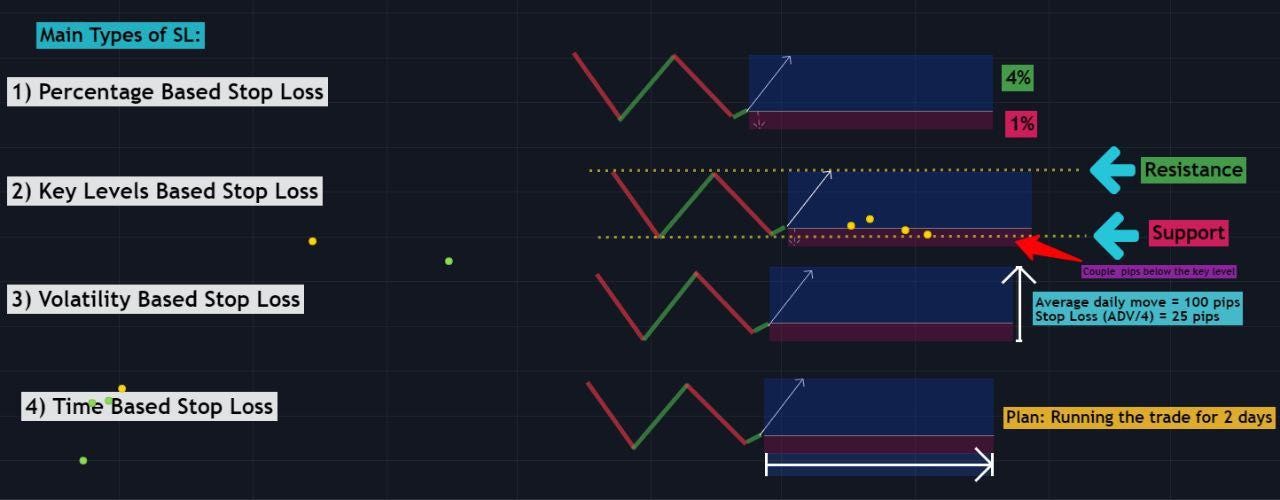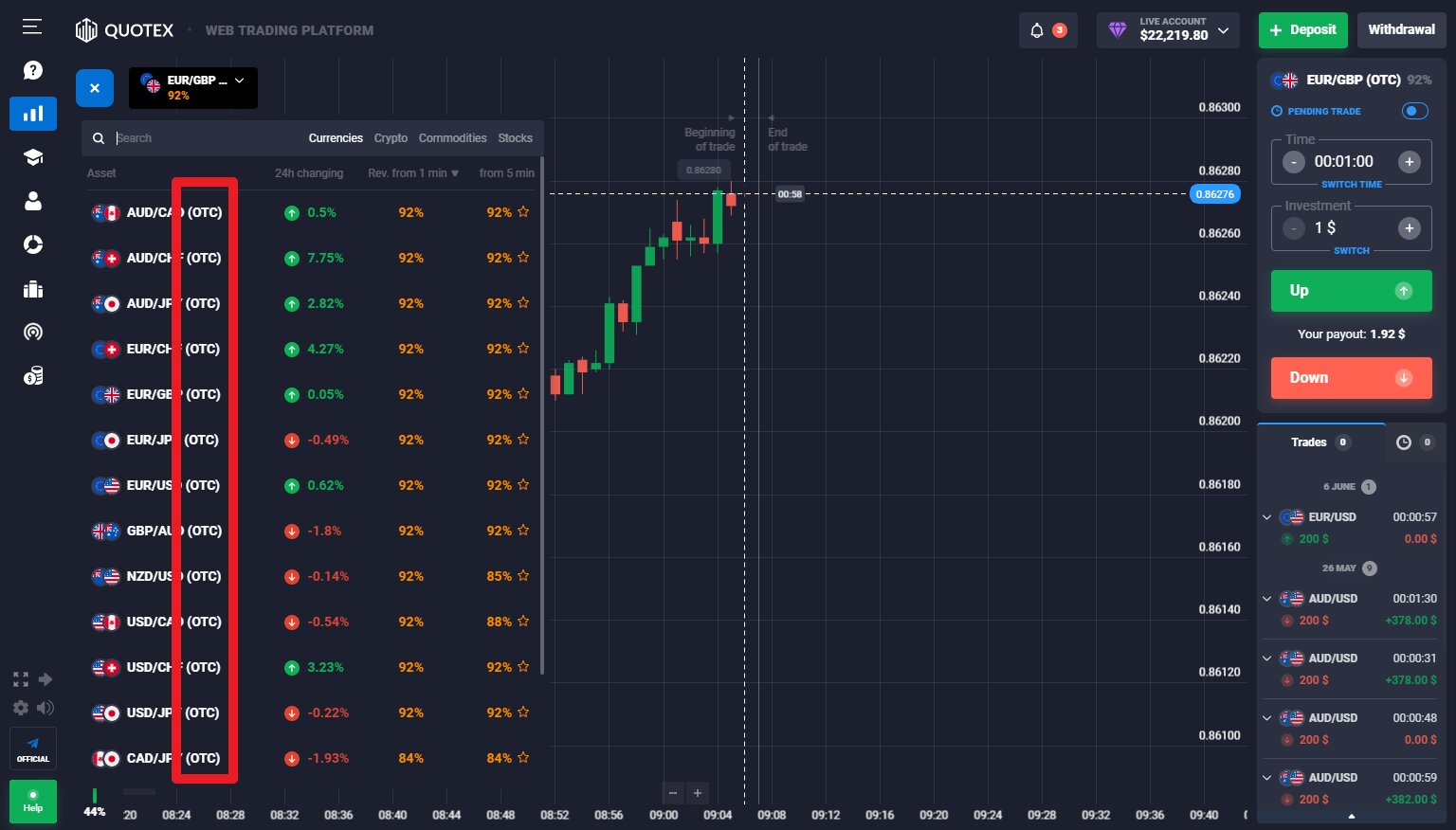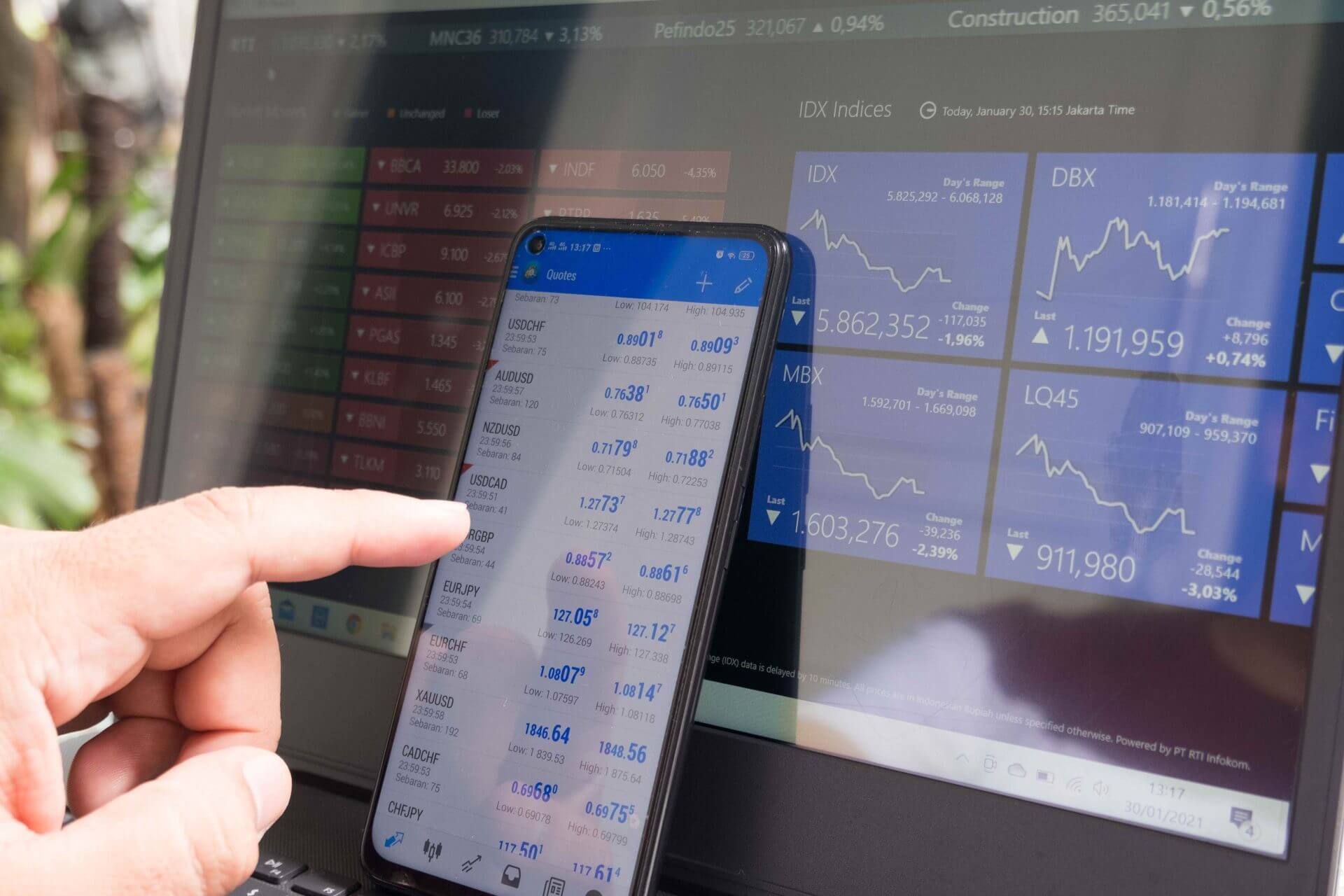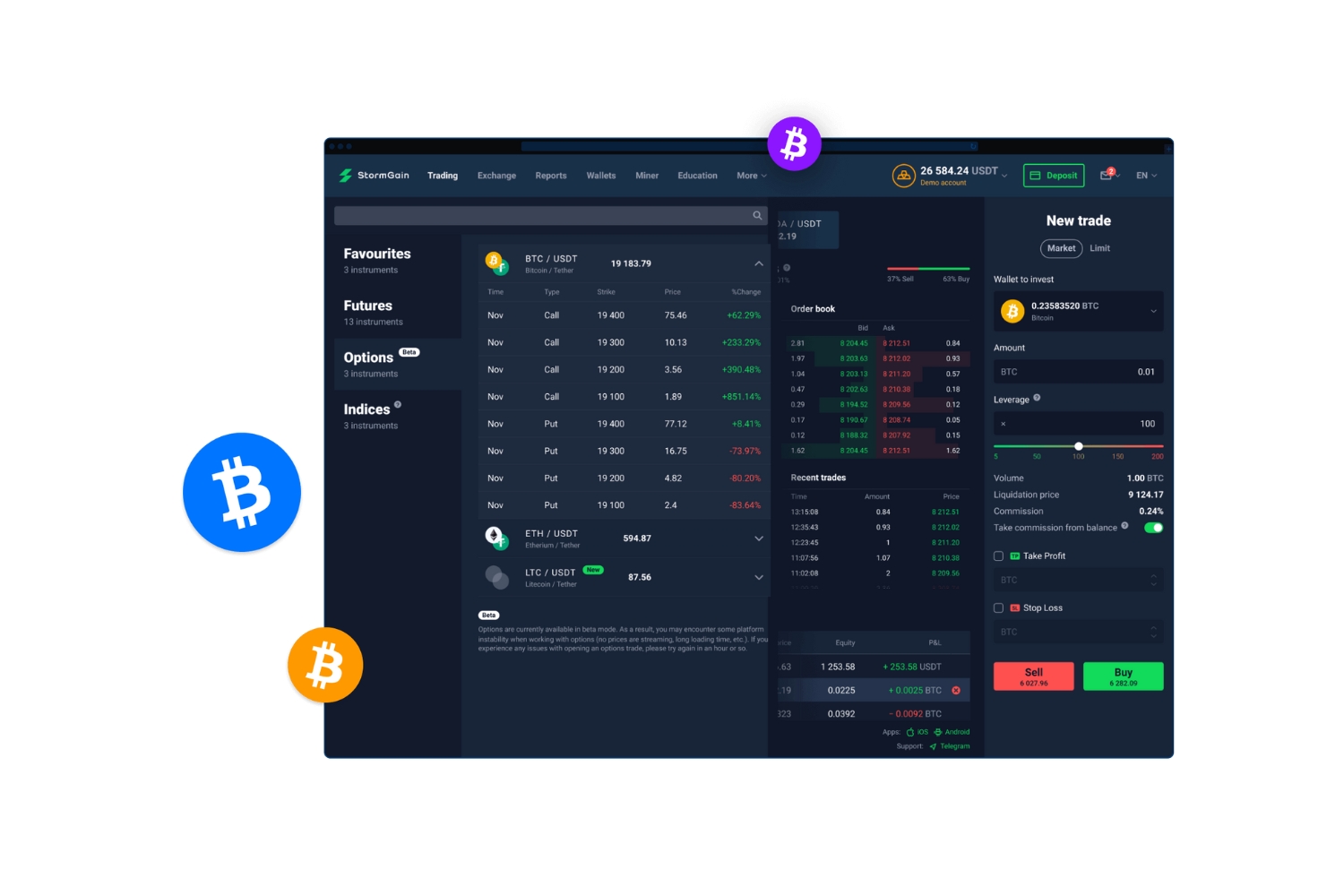Introduction
When it comes to trading, one of the challenges that traders often face is slippage. Slippage refers to the difference between the expected price of a trade and the actual executed price. It can occur in any market, whether you are trading stocks, forex, or cryptocurrencies.
Slippage is a common occurrence in trading and can have a significant impact on a trader’s profitability. It can result in unexpected losses or reduced profits, which can be frustrating and discouraging for traders. However, if you understand the causes of slippage and take the necessary steps to avoid it, you can minimize its impact on your trades.
In this article, we will delve into what slippage is, the causes behind it, and share some valuable tips to help you avoid slippage in your trading endeavors. By implementing these strategies, you can enhance your trading experience and increase your chances of achieving successful trades.
It’s important to note that slippage is a natural part of trading and cannot be entirely eliminated. However, by employing the right techniques, you can significantly reduce its occurrence and mitigate its potential risks.
So, let’s dive in and explore how you can avoid slippage in your trading activities.
What is slippage?
Slippage refers to the difference between the expected price of a trade and the actual price at which the trade is executed. It occurs when there is a delay between the time you place an order and the time it is filled. Slippage can happen in both directions, resulting in either positive or negative impact on your trades.
There are various factors that contribute to slippage, including market volatility, liquidity, and execution speed. During periods of high volatility, such as significant news announcements or economic events, slippage is more likely to occur as there are rapid price movements in the market, making it challenging to execute trades at the desired price.
Slippage can also occur due to low market liquidity. Liquidity refers to the ease with which an asset can be bought or sold without causing significant price movements. If there isn’t enough liquidity in the market for a particular asset, it can result in slippage as there may not be enough buyers or sellers to match your trade at the desired price.
Slippage can have a significant impact on your trading results. If you experience positive slippage, it means your trade is executed at a more favorable price than expected, resulting in higher profits. On the other hand, negative slippage occurs when your trade is executed at a less favorable price, leading to potential losses.
Slippage is a common occurrence in fast-paced markets like forex and cryptocurrency, where prices can change rapidly. It is important to be aware of slippage and take measures to minimize its impact on your trades.
In the next section, we will explore the causes behind slippage and gain a deeper understanding of market liquidity, which plays a crucial role in slippage. By understanding these factors, you will be better equipped to avoid slippage and make more informed trading decisions.
Causes of Slippage
Slippage in trading can occur due to several factors, and understanding these causes is crucial to effectively manage and mitigate its impact. Here are some of the main causes of slippage:
Market Volatility:
One of the primary causes of slippage is market volatility. When market conditions are highly volatile, prices can move rapidly within a short period, making it difficult to execute trades at the desired price. This is especially true during significant news releases or unexpected events that cause sharp price fluctuations. The larger the price movement, the more likely slippage is to occur.
Insufficient Liquidity:
Liquidity refers to the ease with which an asset can be bought or sold without causing significant price movements. If there is insufficient liquidity in the market for a particular asset, it can result in slippage. This occurs when there aren’t enough buyers or sellers to match your order at the desired price, forcing the trade to be executed at a different, less favorable price.
Execution Speed:
The speed at which your trade is executed can also contribute to slippage. In fast-paced markets, where prices can change within seconds, delays in execution can result in slippage. This is more likely to happen if you are using a slower internet connection or if the trading platform experiences technical issues.
Order Size:
The size of your order can impact the likelihood of slippage. If you place a large order, it may be challenging to find enough liquidity in the market to execute the entire order at the desired price. As a result, the order may be filled partially, leading to slippage for the remaining portion.
Requotes and Delays:
In some cases, brokers may experience requotes or delays in executing trades, particularly during times of high market volatility. Requotes occur when the broker is unable to execute the trade at the requested price and provides a new quote. Delays in trade execution can also result in slippage, as prices may have moved by the time the trade is executed.
By understanding the causes of slippage, you can take proactive measures to minimize its impact on your trades. In the next section, we will delve deeper into the concept of market liquidity and its role in slippage, providing you with valuable insights to avoid slippage in your trading activities.
Understanding Market Liquidity
Market liquidity plays a crucial role in determining the likelihood of slippage in trading. Liquidity refers to the availability of buyers and sellers in a particular market, enabling smooth execution of trades without significant price movements. Understanding market liquidity is essential for traders as it can help them assess the potential risk of slippage.
There are two main types of market liquidity: tight liquidity and deep liquidity.
Tight Liquidity:
Tight liquidity refers to a market with limited participants and low trading volumes. In such markets, even small trades can cause significant price fluctuations due to the absence of enough buyers and sellers. Tight liquidity increases the chances of slippage as there might not be enough market depth to absorb large buy or sell orders without impacting the price. Traders must exercise caution and be aware of the liquidity conditions before executing trades in such markets.
Deep Liquidity:
Deep liquidity, on the other hand, represents a market with a large number of participants and high trading volumes. In deep markets, there are abundant buyers and sellers, and trades can be executed smoothly with minimal slippage. Deep liquidity provides traders with better opportunities to enter and exit positions at their desired price levels, reducing the likelihood of being impacted by slippage.
To assess market liquidity, traders can look at various indicators or factors, such as trading volume, bid-ask spreads, and order book depth. Higher trading volumes indicate more active participation in the market, while narrower bid-ask spreads suggest tighter spreads and potentially better liquidity conditions. Order book depth showcases the number of buy and sell orders at different price levels, giving traders an idea of the available liquidity.
It’s important to note that market liquidity can vary across different assets and trading sessions. Some assets may have higher liquidity during specific times of the day or when certain markets are open. Traders should pay attention to these liquidity patterns and adjust their trading strategies accordingly.
By understanding market liquidity and its impact on slippage, traders can make more informed decisions and choose markets or assets with favorable liquidity conditions. In the next section, we will provide you with practical tips to avoid slippage in your trading activities.
Tips to Avoid Slippage
While slippage cannot be entirely eliminated from trading, there are several strategies you can employ to minimize its impact on your trades. Here are some helpful tips to avoid slippage:
1. Setting Realistic Expectations:
Having realistic expectations is crucial when it comes to avoiding slippage. Understand that slippage is a natural occurrence in trading, especially during periods of high volatility. Accept that you may not always get your desired entry or exit price, and be prepared to adapt your trading strategy accordingly.
2. Utilizing Stop-Loss and Take-Profit Orders:
Stop-loss and take-profit orders are essential risk management tools that can help you avoid slippage. By setting a stop-loss order, you can limit potential losses by automatically exiting a trade if the price reaches a predefined level. Similarly, take-profit orders allow you to lock in profits by automatically closing a trade when the price reaches a specified target.
3. Avoiding High Volatility Periods:
During times of high volatility, such as major news releases or economic events, price movements can become more erratic, increasing the likelihood of slippage. Consider avoiding trading during these periods or adjust your strategy accordingly. Stay informed about upcoming news events and plan your trades around them to minimize slippage risks.
4. Using Limit Orders:
Limit orders allow you to specify the exact price at which you want to enter or exit a trade. By using limit orders instead of market orders, you have a better chance of getting your desired price. However, keep in mind that there is a possibility that your limit order may not be filled if the price does not reach your specified level.
5. Diversifying Your Trades:
Instead of placing all your trades in one market or asset, consider diversifying your trades across different markets or instruments. This diversification can help reduce the impact of slippage on your overall trading portfolio. Diversifying can also provide opportunities for offsetting losses and enhancing potential gains.
By implementing these tips, you can minimize the occurrence and impact of slippage in your trading activities. However, it’s important to remember that slippage is a natural part of trading and cannot be entirely avoided. Stay vigilant, monitor market conditions, and adjust your strategies accordingly to navigate the challenges of slippage and enhance your trading success.
Setting Realistic Expectations
When it comes to trading, it is crucial to set realistic expectations to avoid unnecessary disappointment and frustration. By having realistic expectations, you can better manage the impact of slippage and make more informed trading decisions. Here are some key points to consider when setting realistic expectations in your trading:
Understanding the Nature of Slippage:
Slippage is an inevitable part of trading, especially during times of high volatility or low liquidity. It occurs when there is a discrepancy between the desired price of your trade and the actual executed price. By accepting that slippage is a potential outcome, you can prepare yourself mentally and emotionally, helping you make more objective decisions during trading.
Educate Yourself on Market Conditions:
Stay informed about current market conditions and factors that impact slippage. Keep an eye on economic news releases, significant events, and changes in market sentiment. Understanding the potential triggers for slippage can help you anticipate and adapt your trading strategy accordingly.
Manage Your Position Sizes:
Controlling your position sizes is essential in avoiding drastic losses due to slippage. If you enter large positions relative to the liquidity available in the market, it increases the risk of experiencing significant slippage. By managing your position sizes appropriately, you can reduce the impact of slippage on your overall trading performance.
Utilize Risk Management Tools:
Risk management is crucial in setting realistic expectations and protecting your trading capital. Implementing risk management tools such as stop-loss orders and take-profit orders can help you limit potential losses and protect profits. These tools provide a level of control over your trades, reducing the impact of slippage on your overall trading strategy.
Keep a Trading Journal:
Maintaining a trading journal allows you to reflect on your trades and analyze the impact of slippage over time. By recording the slippage you experience, you can identify patterns and trends, which can later be used to adjust your trading strategy and refine your expectations. Reviewing past trades can help you set more realistic expectations for future trades.
By setting realistic expectations in your trading, you can better navigate the challenges of slippage and focus on implementing strategies to mitigate its impact. Remember that slippage is a normal part of trading, and by accepting it and adapting your approach, you can enhance your overall trading experience and increase your chances of long-term success.
Utilizing Stop-Loss and Take-Profit Orders
Stop-loss and take-profit orders are powerful risk management tools that can help you effectively manage slippage and protect your trading positions. By utilizing these orders, you can automatically exit trades at predetermined price levels, reducing the impact of slippage on your trading outcomes. Here’s how you can make the most of stop-loss and take-profit orders:
Stop-Loss Orders:
A stop-loss order is an instruction to close a trade at a specific price level that is less favorable than the current market price. It is designed to limit your potential losses and protect your capital if the trade goes against you. By setting a stop-loss order, you can define the maximum amount you are willing to lose on a trade, helping you avoid significant slippage-induced losses.
When placing a stop-loss order, it is important to consider the volatility and liquidity of the market you are trading. Placing a stop-loss order too close to the current price may result in premature exit due to normal market fluctuations. On the other hand, setting it too far away may expose you to larger potential losses if the price moves against your position.
Take-Profit Orders:
A take-profit order is an instruction to close a trade once it reaches a specified profit target. It allows you to lock in profits and secure your gains without constantly monitoring the market. By setting a take-profit order, you can ensure that you don’t miss out on potential profits if the market reverses before you have a chance to exit the trade manually.
Similar to stop-loss orders, setting a take-profit order requires careful consideration. You need to determine a realistic profit target based on your trading strategy and market conditions. Setting it too close to the entry price may result in premature exits, while placing it too far away may expose you to potential reversals and missed profit opportunities.
Trailing Stop-Loss Orders:
A trailing stop-loss order is a dynamic type of stop-loss order that automatically adjusts as the price moves in your favor. It allows you to lock in profits while giving a trade room to develop further. As the price moves in your favor, the stop-loss level trails behind, maintaining a set distance from the current market price. This mechanism helps protect profits and capture more significant gains during trending market conditions.
When utilizing trailing stop-loss orders, it is important to determine the appropriate trail distance and adjust it based on market volatility. A smaller trail distance may result in frequent exits due to minor price movements, while a larger trail distance may expose you to giving back too much profit if the market reverses abruptly.
By utilizing stop-loss and take-profit orders effectively, you can limit losses, secure profits, and mitigate the impact of slippage on your trading outcomes. These risk management tools provide a level of control and discipline to your trading strategy, enhancing your overall trading experience and increasing your chances of success.
Avoiding High Volatility Periods
High volatility periods in the market can significantly increase the likelihood of slippage and impact the accuracy of your trade execution. It is important to be mindful of these periods and take steps to minimize the potential risks associated with slippage. Here are some strategies to avoid high volatility periods:
1. Economic News Releases:
Economic news releases can have a significant impact on market volatility. Major economic indicators, such as GDP reports, interest rate announcements, and employment data, can cause sudden and sharp price movements. To avoid slippage during these periods, consider refraining from trading or reducing your exposure to the market immediately before and after these news releases. Monitor economic calendars and plan your trades accordingly.
2. Political Events and Geopolitical Uncertainty:
Political events and geopolitical tensions can lead to heightened market volatility. Elections, policy announcements, and geopolitical conflicts can create uncertainty and rapid price fluctuations. Stay informed about geopolitical developments and be cautious when trading during periods of heightened political tension. It may be wise to reduce your position sizes or avoid trading volatile currency pairs or assets related to the affected region.
3. Trading Session Overlaps:
When multiple trading sessions overlap, such as the European and North American sessions, there can be increased market activity and volatility. During these sessions, larger volumes of traders are actively participating, leading to more rapid price movements. While increased volatility can present trading opportunities, it also heightens the risk of slippage. Consider adjusting your trading strategy and risk management approach during these overlapping sessions.
4. Overnight Trading:
Overnight trading, particularly when major financial centers are closed, can be characterized by lower liquidity and wider spreads. This can make the market more susceptible to slippage due to the absence of major market participants. If possible, avoid trading during low-liquidity periods, such as late evenings, early mornings, or weekends, especially when trading assets with low trading volumes.
5. Black Swan Events:
Black swan events are rare and unexpected occurrences that have a profound impact on financial markets. These events can result in extreme volatility and erratic price movements. Examples include natural disasters, financial crises, or unforeseen geopolitical events. While it is challenging to predict black swan events, it is essential to remain cautious during periods of heightened uncertainty and closely monitor news and market developments.
By avoiding high volatility periods, you can reduce the probability of slippage and minimize the associated trading risks. However, it’s important to note that volatile market conditions can also present trading opportunities, especially for those who actively pursue short-term trading strategies. Consider adapting your trading approach depending on your risk appetite and tolerance for market volatility.
Using Limit Orders
Limit orders are a valuable tool in avoiding slippage and ensuring you enter or exit a trade at a specific price level. By utilizing limit orders, you have more control over your trade execution and can potentially minimize the impact of slippage. Here’s how you can effectively use limit orders:
Entering Trades:
When opening a trade, instead of using a market order that executes immediately at the prevailing market price, consider using a limit order. With a limit order, you can specify the exact price at which you want to enter the trade. By setting a limit order slightly below the current market price (for a buy order) or slightly above the current market price (for a sell order), you can increase the likelihood of getting a favorable entry price without experiencing slippage.
It’s important to note that setting your entry price too close to the current market price may result in the order not getting filled if the price doesn’t reach your desired level. Therefore, consider analyzing market trends, support and resistance levels, and other technical indicators to determine an appropriate entry price for your limit order.
Exiting Trades:
Similar to entering trades, you can also utilize limit orders to exit trades at your desired target price. By setting a limit order to close a trade at a specific level of profit, you can lock in your gains and avoid missing out on potential opportunities due to slippage. This way, you can automate the process of taking profits without constantly monitoring the market and making subjective decisions.
Managing Stop-Loss Orders:
Limit orders can also be used in conjunction with stop-loss orders to manage risk more effectively. By setting a stop-loss order as a limit order, you can ensure that your trade is closed at a specific price level if the market moves against you. This provides you with downside protection and helps prevent slippage-induced losses.
When setting limit orders, it’s important to consider the current market conditions, volatility, and liquidity. In highly volatile and illiquid markets, there may be a higher chance of your limit order not getting filled. It’s recommended to assess the market environment and adjust the price level of your limit order accordingly.
Using limit orders can offer several benefits in avoiding slippage and maintaining control over your trade execution. However, it’s important to exercise caution and avoid placing limit orders too far away from the prevailing market price, as this may result in missed trading opportunities or unrealized profits. Regularly reassess your limit order placements based on market dynamics and adjust them if necessary.
By incorporating limit orders into your trading strategy, you can increase your chances of entering and exiting trades at desired prices while minimizing the potential impact of slippage.
Diversifying Your Trades
Diversification is a fundamental risk management strategy that can help you minimize the impact of slippage on your trading portfolio. By diversifying your trades, you spread your risk across different assets, markets, or trading strategies, reducing your exposure to slippage in any single trade. Here’s how you can effectively diversify your trades:
Varying Asset Classes:
Diversify your trades by including a mix of different asset classes in your portfolio. For example, instead of solely focusing on stocks, consider diversifying into other asset classes like forex, commodities, or cryptocurrencies. This diversification can help you take advantage of different market conditions and reduce the dependence on a single asset class, minimizing the impact of slippage on your overall trading performance.
Trading Different Timeframes:
Explore different timeframes in your trading strategy. Instead of solely focusing on short-term day trading, consider incorporating swing trading or longer-term investing. Diversifying your trading timeframes allows you to capture opportunities in both short-term price movements and long-term trends, reducing the risk of slippage in any particular timeframe.
Trading Multiple Markets:
Instead of concentrating your trades in a single market, explore opportunities in various markets. For example, you can trade stocks, forex pairs, and commodities to diversify your exposure. Different markets may have different levels of volatility and liquidity, offering unique trading opportunities and reducing the impact of slippage on your overall portfolio.
Adopting Different Trading Strategies:
Consider diversifying your trading strategies to further reduce the impact of slippage. For instance, you can have a mix of technical analysis-based strategies and fundamental analysis-based strategies. By combining different trading approaches, you can potentially minimize the risk of being heavily affected by slippage in any single strategy.
Setting Trade Size Limits:
Limit the size of your trades to avoid overexposure to any single trade and minimize the impact of slippage. By setting trade size limits as a percentage of your total trading capital, you ensure that no single trade has a disproportionate impact on your overall portfolio. This allows you to maintain a balanced and diversified trading approach.
It’s important to note that diversification does not guarantee profits or completely eliminate the risk of slippage. It is still crucial to conduct thorough analysis, adapt to market conditions, and implement proper risk management strategies. Regularly monitor and assess the performance of your diversified trades to ensure that they align with your trading goals and risk tolerance.
By diversifying your trades, you can reduce the impact of slippage and increase the resilience of your trading portfolio. Diversification enhances your ability to navigate market fluctuations, expand your trading opportunities, and potentially improve your overall trading performance.
Conclusion
Slippage is a common challenge in trading, but by understanding its causes and implementing effective strategies, you can minimize its impact on your trades. Throughout this article, we have explored various techniques to help you avoid slippage and improve your trading experience.
We started by defining slippage as the difference between the expected and executed price of a trade. We then delved into the causes of slippage, such as market volatility, insufficient liquidity, execution speed, order size, and requotes or delays. Understanding these causes is crucial in developing strategies to mitigate slippage risks.
We also discussed the importance of understanding market liquidity and its role in slippage. By differentiating between tight and deep liquidity, traders can assess the potential impact of slippage and adjust their trading approach accordingly.
Furthermore, we explored practical tips to avoid slippage, such as setting realistic expectations, utilizing stop-loss and take-profit orders, avoiding high volatility periods, using limit orders, and diversifying trades. These strategies enhance risk management, improve trade execution, and reduce the likelihood of slippage occurring.
Setting realistic expectations and understanding the nature of slippage are foundational steps. Utilizing stop-loss and take-profit orders helps manage potential losses and secure profits. Avoiding high volatility periods and using limit orders allow for more precise trade entries and exits. Lastly, diversifying trades across assets, timeframes, markets, and strategies helps spread risk and minimize the impact of slippage on your overall trading performance.
It’s important to remember that while these strategies can significantly minimize slippage, it cannot be entirely eliminated. Slippage is inherent in trading and is influenced by market conditions. Therefore, ongoing monitoring, adaptation, and continuous education are crucial to successful trading.
By implementing the strategies discussed in this article and incorporating them into your trading routine, you can strengthen your ability to navigate slippage and enhance your overall trading success. Stay informed, remain disciplined with risk management, and adapt your strategies as market conditions change.
Remember, successful trading is a continuous learning process, and with the right mindset and effective strategies, you can mitigate the impact of slippage and achieve your trading goals.







